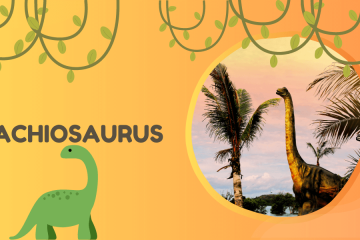Scientific Name
Pteranodon longiceps
Description
Pronounced “Te-RAN-uh-DON” which means “winged and toothless”, the pteranodon is a prehistoric animal that was not considered either as a bird or dinosaur, but as a flying reptile in the genus of pterosaur. Pterosaur means that it’s not a dinosaur.
The pteranodon matched the appearance of a giant pelican. It was quite large, standing at 6 feet tall and 6 feet long and had very extensive wings spanning a whopping 24 feet wide. It had a long jaw and beak and a crest at the back which is thought to have provided balance for the long mouth.

Food
The Pteranodon was surprisingly a carnivorous reptile, even though it lacked teeth. Information based on its fossils found in rocks in marine environments indicate that the pteranodon spent most of its time on ocean waters hunting for fish- mainly by scooping fish out of the water and swallowing them whole, just like modern-day pelicans. Although the flying reptile’s main diet consisted of fish, it’s also known to have consumed insects, crabs, and mollusks- both dead or alive.
Habitat
The first skull of the prehistoric pteranodon was discovered in 1876 in Smoky Hill River, Wallace County in Kansas. Other well-preserved remains have also been discovered in Nebraska, Wyoming, and England- all dating between 70-83 million years ago in the Late Cretaceous period.
Predators
The pteranodon’s predators are said to have included but not limited to various carnivorous dinosaurs such as Albertosaurus, the Troodon, the Deinodon, as well as the Tyrannosaurus Rex. Although its sharp protruding claws may have played a crucial role in fighting predators, the Pteranodon’s ability to fly was undoubtedly it’s main line of defense. To avoid being attacked by predators, scientists believe that these prehistoric creatures spent most of their times flying in the air.
Social Structure

Because the pteranodon became extinct millions of years ago, scientists have little or no information about their behavior. Although their wings indicate that they were able to flap them just like birds do, evidence actually suggests that they used them primarily for gliding- just like eagles. And because of their large body size yet low weight and hollow bones, pteranodon flying ability was excellent.
Scientists believe that the crust behind their head served two main purposes. One, the bony crest promoted stability and balance while in the air and two, the crest distinguished the sexual characteristics between male pteranodons and female pteranodons. Male pteranodons had a significantly larger crest compared to females.
Birth & Offspring
Very little is known about the Pteranodons’ breeding cycles as well as the number of offspring they produced. However, scientists believe that because they were a very intelligent flying reptile species, they did actually care for their young ones by building nests, bringing them food, and even teaching them how to fly.
Senses
Based on the discovered skulls, Pteranodons had quite big eyes which scientists believe that they mainly relied on their good eyesight especially for fish hunting in the ocean waters. Likewise, these creatures also had larger brains which indicated they exhibited more intelligence compared to other reptile species.

Lydia King is a huge animal lover and has always been fascinated with learning about the animal kingdom. She enjoys writing about anything animal related from scientific information about rare species to animal references in pop culture.












